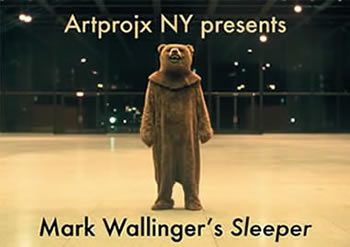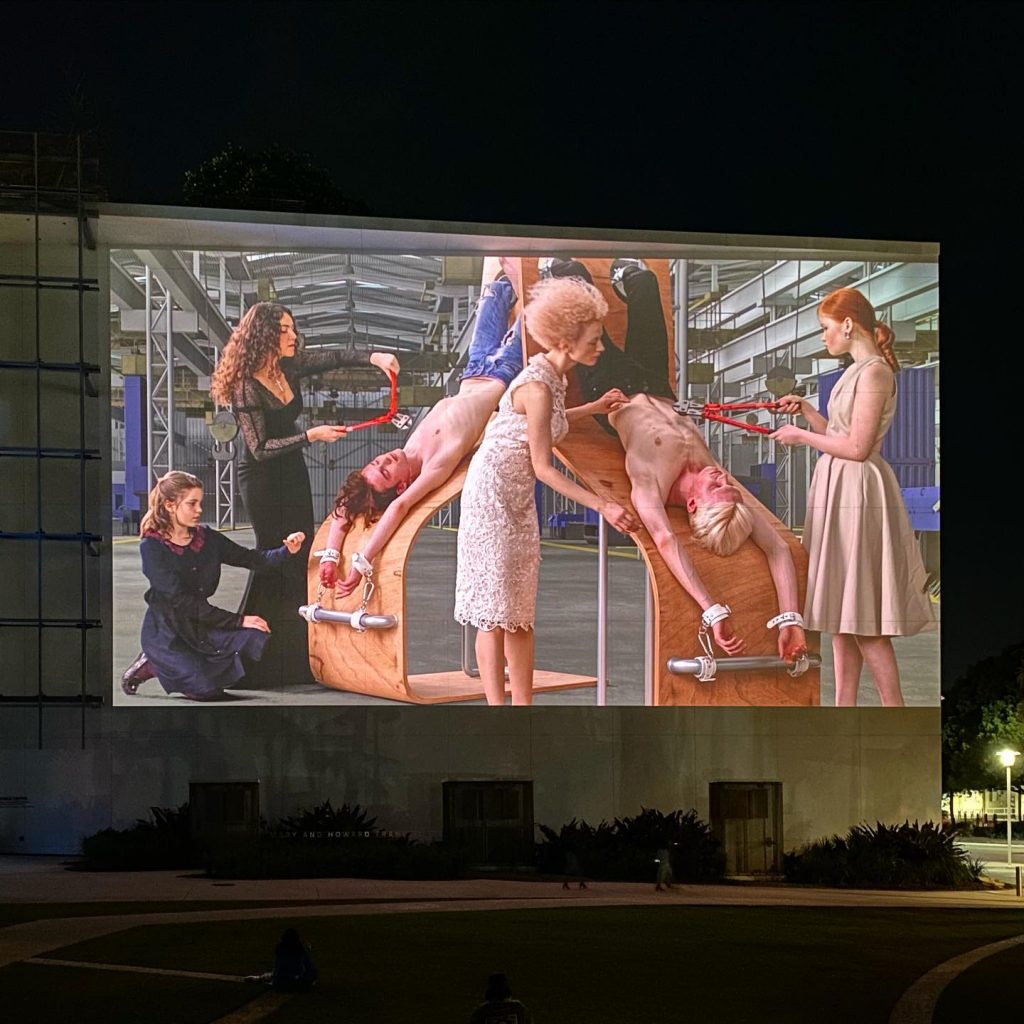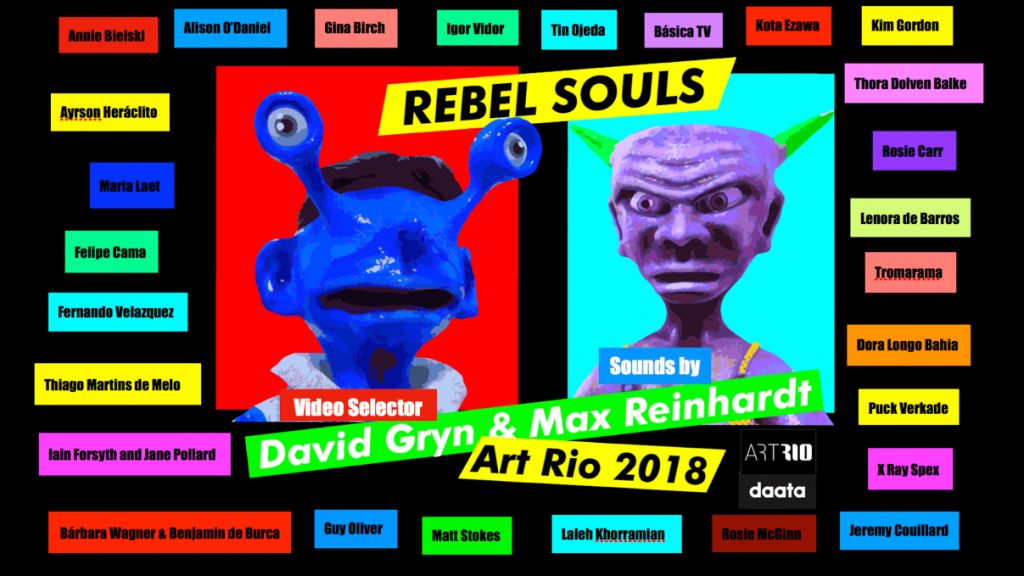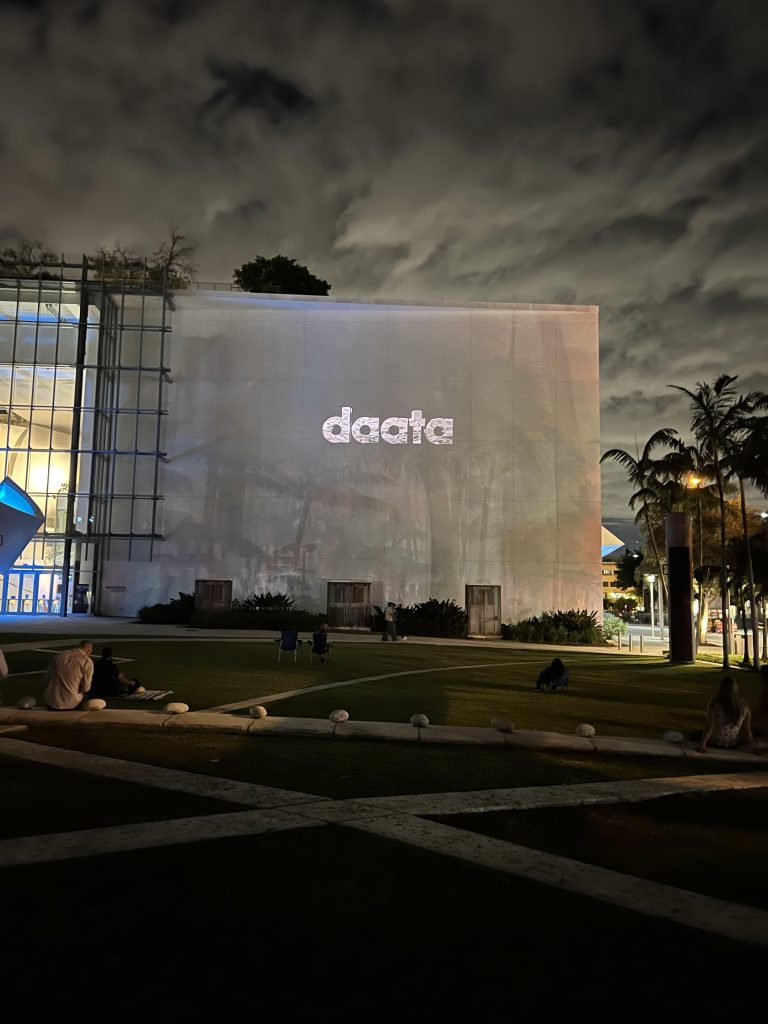DAVID GRYN
Generazione Critica: Your education and your work experience as a video and sound curator, often in close dialogue within the cinematographic field, led you to enter inside the art world and then you become curator of the Film and Sound section for Art Basel Miami Beach from 2011 to 2018. During these years you have had the privileged position of discovering the arctic expressions of young and established authors within the contemporary art scene. Also taking into consideration the digital turning point, what changes have you witnessed over the years? Furthermore, as you approached digital art, was there a particular event that led you to specialize in this particular field?
David Gryn: When I started working with artists moving image and sound, I did so for many years in the context of the cinema. I started projects with artists at The Prince Charles Cinema in the heart of London’s Leicester Square. The artworks I played were in 35mm/16mm and on BETA SP tapes and then Blu Ray and DVD’s. Then, like with most projector based venues, they became digitised, and this is where we are at today. One of my first events in this context was a project with Mark Wallinger, called The Lark Ascending. It started life as a conversation a few months prior, I bumped into the artist, whom I knew, and said do have any ideas for a new artwork to play in the cinema, he said “I have an idea”, which I replied to as “great’, it’s a deal, let’s do it !!! …” and that was virtually the total sum of of our conversation. A few months later, I got the draft work, and it was perfect, a 30 minute piece, with a dark screen turning bright over its duration, with the sound of a lark playing at low/slow levels, speeding up to the normal bright chirpy decibels of the bird. So the artwork was very abstract, but at the same time had a kind of visual/audio narrative arc – with the light and sound changing through the duration. My process was really in the events marketing. The cinema was packed, with queues around the block and over 500 in the audience, and it was very sensational, with some people not being able to cope with its minimalism and abstract nature, and shouting and storming out, but most people stayed and were moved by the whole experience. The art press was very impressed, and it generated great reviews in mainstream newspapers, and the results were that Mark’s gallery, Anthony Reynolds got more footfall than normal, there was a visceral buzz around this work, the artist, his gallery show at the same time. Thereafter, I had galleries, museums and art fairs approaching me non-stop for many years after to partner and collaborate on similar cinema based projects. This event far exceeded by expectations for what would happen and really made an impact on and for me.

Mark Wallinger, Sleeper presented by Artprojx NY at Anthology Film Archives NY 2007
GC: In 2015 you created Daata, an online gallery in which to discover, transmit and collect digital works of art through the services offered by the web. Did your experience at Art Basel Miami Beach influence this choice or did it determine any particular characteristics on which to base this ambitious and avant-garde project? In the process of its genesis, what were the models that inspired you and your collaborators in building the Daata structure?
DG: In around 2010, whilst I was in the middle of a great Artist Cinema project with The Armory Show in New York, I was approached by the Art Basel directors, with the genuine desire to help them find a way to encourage their selected galleries to show more or indeed any of their artists’ video artworks and digital media. So I devised a program over 8 years that worked to do just that, creating a powerful program with the most renowned artists and galleries from all over the world on the outdoor 7000 square foot screening wall of the New World Symphony in Miami Beach during Art Basel there. However, in working on eliciting submissions of artworks, it was an obvious dawning on me that if there was a stronger commercial imperative to show video, then the galleries, art fair, collectors and audiences would take it more seriously. At that time I prayed for a day when artists working with digital mediums would become treated as equal as any other artist medium. I hadn’t anticipated the crypto/web3 mayhem yet – but had hoped/daydreamed for a subtler version of it.
So, in thinking of a market place, we conceived of an online platform (Daata ) that would make commissioning and selling artwork, simpler than selling paintings from the walls of a gallery. And logically the home of digital is online – so a website seemed the natural language for an online market place.
The other logic was to make sure that artists would be supported in making the artworks and gain a return on a percentage on any sales. We also started with the aim to sell limited editions at low prices – incrementally inflating as the works sold out. In some ways anticipating the crypto model – at that point – yet to come. We also had contracts with all artists – so that we agreed to share royalties, and pay them for their work.

AES+F, Inverso Mundus, Pena Tiranna (in collaboration with Anthony Roth Costanzo) in a Daata Video screening program Nameless Grace at New World Symphony during Art Basel in Miami Beach 2021
GC: Daata offers the privilege of being able to view and collect digital works of art that are not always so easy to find in exhibitions or institutions. Browsing on Daata it is possible to come across experiments by young artists and also expressions by well-known artists: the variety offered has a well-defined selection and curatorial choices upstream. How do you proceed, together with your team, in the selection of artists to propose on the platform? This heterogeneity also makes Daata a community in which not only to the users is offered the opportunity to stay updated on the digital art scene but also allows artists to get to know each other: how important it is for you to generate a place for exchange and dialogue that goes beyond the offer and sale of works of art?
DG: To a greater extent there is an art community, it isn’t always cohesive, sometimes even divisive, but there is a sense of reverence for the people who are known to be experts in their field. So Daata has now a history of being known for empowering artists to produce digital art works, and thus other curators, artists, producers, galleries, museums share information with us on artists they revere and venerate and believe should be supported by us. When we are interested in an artist, there is the immediate chemistry and also the knowledge of who are the other trusted entities that work with the same artist, this gives us a sense of who cares and connects with the artist, and therefore building up our trust in, and understanding of, them.
GC: With the creation of Daata and Daata Fair you have given rise to a platform that can offer a new service to artists operating in the specific field of digital art: Daata is therefore constituted by a complex and stratified structure, which not only constitutes a showcase/gallery of works of art, but from 2020 is also proposing a digital art fair. This is a delicate topic also because it is in the genesis and formation phase: what are the models you are looking for to guarantee a safe area for both artists and collectors?
DG: The Daata Fair emerged in lockdown time, soon after we had launched Galleries at Daata. This took shape as many galleries had approached Daata to see if we could provide a platform where they could show their artists videos, at a time when the galleries were not able to open their doors. This seemed like a natural language for us. The initial process was a free model. The Daata Fair model was a paid-for model and was more successful as there was a value exchange and the galleries understood how they could benefit more.
GC: Daata has and continues to create a series of collaborations with institutions that go beyond the digital dimension and allow Daata to also find forms of expression within physical spaces: I am thinking of the recent exhibition of the winning works of the Open call which were exhibited at KOKO in London, or in past collaborations with organizations such as the Amsterdam Foundation and with Somerest House. How important is it for you to also bring what happens inside Daata to the outside and above all to create a network of connections between digital realities and international institutions?
DG: We enjoy collaborating with Institutions around the world, as it indeed does bring the ephemeral to becoming tangible. In this vein, we have worked with art fairs around the world such as Art Basel, Frieze, EXPO Chicago, Art Fair Philiinnes, Photofairs Shanghai, Art Cologne, Art Rio and more. We have collaborated with venues such as Phillips NY, Soho House, citizenM, NeueHouse NY, The Bass Museum Miami Beach, New World Symphony Miami Beach, Kiasma Helsinki, Hammer Museum LA, Park Avenue Armory, Times Square Arts.

Rebel Souls, Daata at Art Rio 2018
GC: Daata is not only the place to discover and collect artworks but it is also a space in which cultural dissemination and research are given great importance: in fact, in the essay section it is possible to find a series of interviews and contributions from researchers, curators and artists. But Daata goes even further with the programming of Talk. This is also an example of the heterogeneity present on the platform and of the care that is given not only to the art market but also to the information necessary above all in a still very young field of research and experimentation. With what methodologies do you try to balance and at the same time to make a more economic and commercial part coexist with the need to generate awareness and knowledge instead? What are the possible meeting points of these two dimensions welcomed by Daata?
DG: As you point out, it is indeed the balance we try to cultivate between artworld intelligence and integrity, along with a market place reality. But both sides need each other. Without the market place potential, most entities do not want to participate, and without the intellectual and cultural discourse the market place would not take it as seriously. The models of integrity and market place processes are in a state of flux right now, the best balance is when they converge.
30/03/23

Daata Video Art Program at New World Symphony during Art Basel in Miami Beach 2021.HEIC

